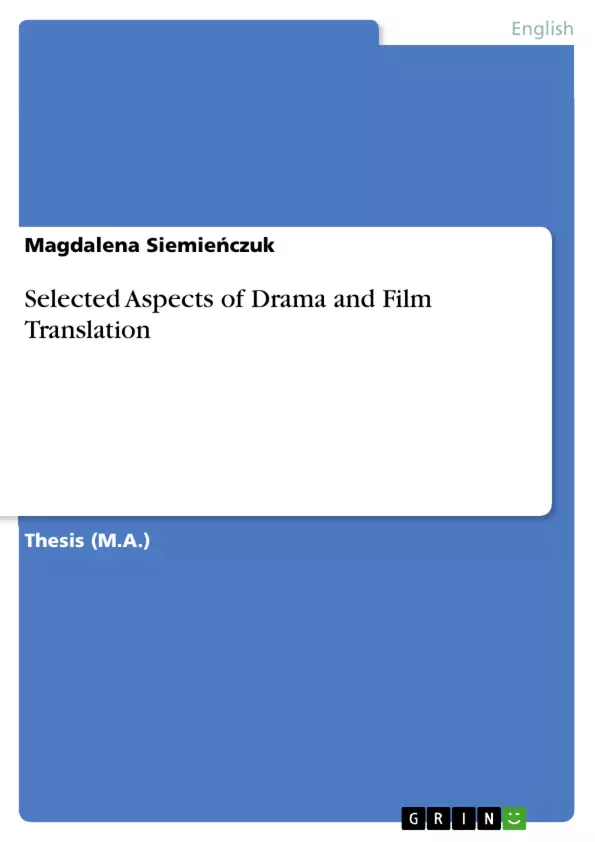The aim of this paper is to be a kind of guide for all the people dealing with drama and film translation who are aiming at successfully achieving their readers’ understanding. What is more, this paper tries to link experience derived from the world of theatre with translation knowledge connected with English Philology. It gives profound description of theatre environment and indicates how a translator can meet the demands and expectations of actors, theatre and film directors as well as their audience.
It summarizes the experience of the greatest Polish translators such as for example Stanisław Barańczak with acting and rehearsing theory provided by Constantin Stanisłavski, the father of the most accomplished acting and directing system. Knowledge of these proceedings introduced by Stanisłavski is of the utmost importance for all film and theatre translations if their work aims to be understandable by the audience.
Inhaltsverzeichnis (Table of Contents)
- INTRODUCTION.
- CHAPTER I: SKOPOS THEORY
- 1.1. INTRODUCTION…..\n
- 1.2. SKOPOS THEORY IN THE HISTORICAL CONTEXT.\n
- 1.3. SKOPOS THEORY IN THE EXPRESSIVE TEXT TYPES..\n
- CHAPTER II: DRAMA TRANSLATION PROBLEMS
- 2.1. INTRODUCTION......\n
- 2.2. TRANSLATION OF THE EXPRESSIVE TYPE LITERATURE.\n
- 2.3. DRAMA AND MOVIE TRANSLATION THEORY.\n
- CHAPTER III: SUCCESSFUL TRANSLATIONS
- 3.1. INTRODUCTION...\n
- 3.2. ANALYSIS OF THEATRICAL TEXTS..\n
- CONCLUSION.
Zielsetzung und Themenschwerpunkte (Objectives and Key Themes)
This paper aims to explore the application of Skopos theory in the context of literary translation, specifically focusing on plays, comedies, dramas, and screenplays. It emphasizes the importance of considering the receiver's needs and expectations in the translation process, particularly in the media world where audience reception significantly influences the success of theatrical performances and films.
- The role of Skopos theory in literary translation.
- The importance of cultural context and audience reception in translation.
- The application of Skopos theory to drama and film translation.
- An analysis of successful translations of English-Polish and Polish-English plays.
- The intersection of translation theory and theatre practice.
Zusammenfassung der Kapitel (Chapter Summaries)
Chapter One delves into the history of translation and introduces the Skopos theory, highlighting its significance for translating expressive type literature. It explores the development of translation theory from antiquity to modern times and emphasizes why Skopos theory stands out as the most suitable approach for literary translations.
Chapter Two focuses on the challenges and strategies involved in translating expressive type literature, particularly theatrical plays and screenplays. It examines the specific demands of translating for the theatre industry, media world, and film productions.
Schlüsselwörter (Keywords)
This paper explores key concepts such as Skopos theory, literary translation, expressive text types, drama translation, film translation, cultural context, audience reception, successful translations, and the relationship between translation theory and theatre practice.
- Quote paper
- Magdalena Siemieńczuk (Author), 2009, Selected Aspects of Drama and Film Translation, Munich, GRIN Verlag, https://www.grin.com/document/310612



